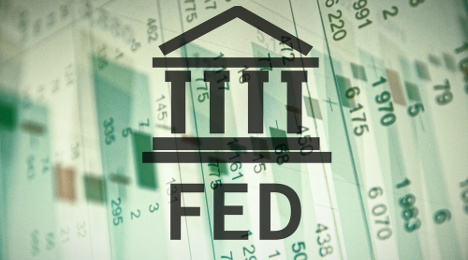2 reasons why next interest rate rise won’t come in 2017

A top expert at S&P Global Ratings gave two reasons why she now expects the Federal Reserve’s interest-rate policy to remain on hold through the rest of the year.
S&P Global U.S. chief economist Beth Ann Bovino explained that factors giving the Federal Reserve reason to pause on raising rates this year after it announces its balance-sheet normalization plan in September include continued “subdued” wage gains in the latest federal jobs report along with soft inflation data from the personal income report.
As a result, Bovino and the team at S&P Global Ratings project that as the Fed monitors the impact on the economy from its reductions in quantitative easing, analysts expect policymakers to raise rates three times next year (by 25 basis points each).
Earlier S&P Global Ratings expected the Fed to raise rates in December with three more rate hikes in 2018.
“The stronger-than-expected 209,000 job gains in July after healthy upwardly revised job gains in June will add to the Fed's belief that the labor market is on solid ground,” Bovino said.
“The 0.1 percentage-point drop in the unemployment rate to a 16-year low of 4.3 percent was because many people got jobs, and even more people entered the jobs market — a nice combination,” she added.
Despite solid job creation, S&P Global Ratings pointed out that wage gains are sluggish, with year-over-year wage gains at just 2.5 percent in June.
“Though in real terms, it’s still in positive territory,” the firm said. “Usually as the economy strengthens, employers have to compete for good workers, pushing prices and wages up. But we haven't seen that trend this time around, and, with job openings near a record high, the question may now be whether businesses are able to find the people with the right skills to fit their needs.”
Comerica Bank chief economist Robert Dye also dissected the connection between job and wage growth and how it might influence the Fed.
“The low unemployment rate suggests that wages and salaries will begin to accelerate, but so far that relationship has been weaker than expected,” Dye wrote in his latest commentary. “Slower gains in wages and salaries, plus tepid inflation data adds downside risk to the expectation of four more Fed funds rate hikes between now and the end of 2018.
“Today’s strong jobs report keeps the Federal Reserve on track to announce on Sept. 20 that balance sheet reduction will begin in October,” Dye continued while noting the Fed will see one more jobs report for August before the Federal Open Market Committee gathers again on Sept. 19 and 20.
In addition, S&P Global Ratings mentioned both the overall personal consumption expenditures (PCE) deflator and the Fed’s “favorite” inflation indicator, the core PCE deflator, excluding food and fuel, have drifted down to 1.4 percent and 1.5 percent, respectively, in June. Analysts explained that’s not only well below the 2 percent rate that the Fed would like to see, but inflation is also drifting in the wrong direction since it peaked in February.
While the Fed has indicated that the weaker pricing data is due to largely transitory factors, such as cellular usage, S&P Global Ratings recapped that Federal Reserve chair Janet Yellen hedged in her testimony to the House Financial Services Committee on July 12, noting that “readings on the CPI showed weakness in a number of categories, and is certainly something that we will be closely monitoring in the months ahead.”
That prompted Bovino to add, “We now expect the soft inflation readings will likely give the Fed reason to take a pause on interest-rate policy action until after they announce their balance-sheet normalization plans, with the next rate hike not until 2018.
“And two more to follow in the year, in our view,” she went on to say.

 View The Latest Edition
View The Latest Edition

